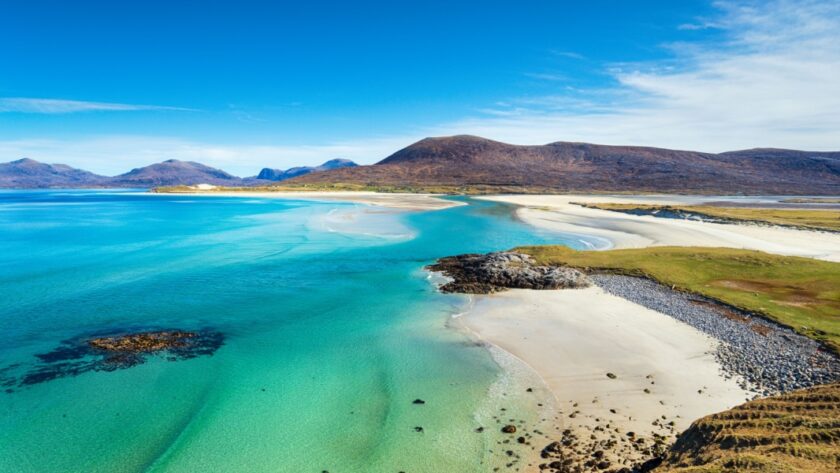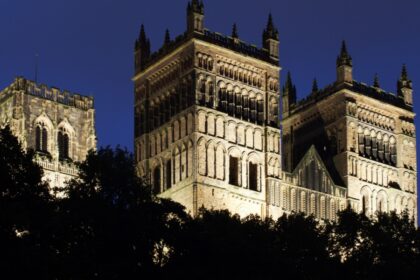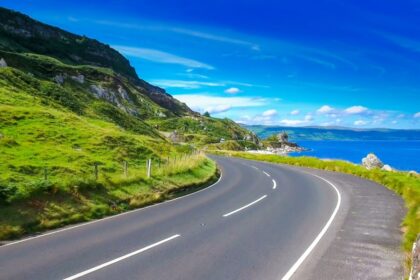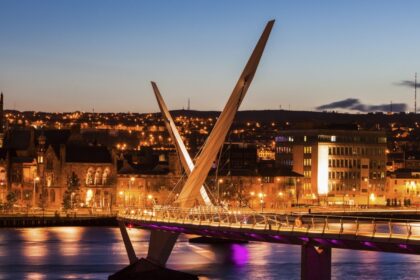The British coastline is not, as some would have you believe, just buckets and spades, chips, and the occasional disappointed seagull. It’s a wonky, weather-beaten wonder that loops and curls for thousands of miles, offering the kind of peculiar details that make geography teachers quietly weep with joy.
Here are 20 coastal facts that might just change the way you look at the edge of the map.
1. It’s longer than you think. A lot longer.
If you tried to walk the UK coastline, you’d need very sturdy shoes and no particular responsibilities. That’s because it stretches over 19,000 miles, thanks to its twitchy habit of folding itself into every inlet and corner it can find. Straight lines are clearly for the Continent.
2. You’re never too far from the sea.
No matter where you are in the UK, the coast is never much more than 70 miles away. Which means that, technically, you could have a seaside picnic before tea, even if you live in Birmingham.
3. There’s a beach that sings.
At Whistling Sands in North Wales, the dry sand emits a faint squeak underfoot. Scientists say it’s down to grain shape and friction. Locals say it’s the sand enjoying itself.
4. Scotland’s coast goes on forever.
Well, almost. Scotland alone has more coastline than England and Wales combined. It’s all crags and headlands and bays-with-no-one-in-them. Bring a flask, a big one.
5. The Jurassic Coast is a proper time machine.
A stroll along the Dorset and East Devon cliffs takes you past 185 million years of history, conveniently laid out in layers. Perfect if you’ve ever wanted to meet a fossil that predates your entire ancestry.
6. There’s a place where the sea sings and the land disappears.
Morecambe Bay is a surreal stretch where the tide can vanish over the horizon, leaving behind a moonscape of mudflats. Lovely to look at. Not to be crossed without a guide and a strong sense of caution.
7. Some beaches are invitation-only (sort of).
Barafundle Bay in Pembrokeshire has no car park, no road, no ice cream van. Just a clifftop path and the feeling you’ve discovered a secret. Bring snacks.
8. Puffins, seals, and dolphins seem to love it here.
The UK’s coast is essentially a wildlife documentary in waiting. Skomer Island, the Farne Islands, and Moray Firth are where Britain keeps its puffins and porpoises when no one’s looking.
9. There’s a castle on a volcano.
Not a fairytale one, a real one. Bamburgh Castle in Northumberland sits on a 300-million-year-old basalt outcrop. It doesn’t breathe fire, but it does look rather dramatic in a sea mist.
10. A whole town fell into the sea.
Dunwich, once a bustling Suffolk port, now mostly exists beneath the North Sea, along with several churches and a respectable medieval bureaucracy.
11. Britain has its own desert.
Dungeness, down in Kent, is technically a desert: all shingle, windblown shrubs, and inexplicably stylish houses. Plus a nuclear power station, for balance.
12. There’s a wave that travels backwards.
The Severn Bore is a tidal surge that barrels upriver like a salmon on a mission. Surfers ride it. Spectators cheer. Ducks look unimpressed.
13. Smugglers were very fond of secret tunnels.
Places like Robin Hood’s Bay and Polperro still have narrow alleyways and not-so-secret hidey-holes, where goods were once spirited away under noses and through trapdoors.
14. Some beaches have dinosaur footprints.
Yes, actual ones. Head to Burniston Bay near Scarborough and you might spot ancient claw marks in the stone. Dinosaurs clearly had a fondness for seaside paddling.
15. There’s a chalk reef hiding under Norfolk.
Off the coast near Cromer lies the longest chalk reef in Europe – and possibly the only coastal one of its kind. Fish love it. Snorkellers adore it. Most people have never heard of it.
16. An island small enough to walk around before lunch.
Thorn Island off Pembrokeshire is just over two acres, and its only building is an old Victorian fort. It’s basically a Monopoly hotel with its own postcode.
17. Some cliffs are growing… sort of.
While erosion is doing its slow and steady thing, areas like Beachy Head sometimes experience chalk landslips that make the cliffs temporarily taller. Nature’s version of home improvement.
18. There’s a forest under the sand.
At Borth and Redcar, ancient tree stumps occasionally emerge from the beach, preserved remnants of a time before rising sea levels ate the land.
19. The Isles of Scilly feel like they’re not quite from around here.
Thanks to a warm Atlantic current, these islands support flowers, birds, and weather that belong in southern Europe. It’s Britain, but with better sunlight and more palm trees.
20. One day, you’ll be able to walk the whole thing.
The England Coast Path is being stitched together as we speak. When finished, it’ll be the longest coastal walk on the planet. Just don’t forget your waterproofs.
Like this listicle? You’ll love the coastline.
Britain’s edge is a restless, remarkable thing – forever crumbling, changing, and revealing oddities. Whether you’re hunting fossils, chasing waves, or simply wondering where your sandwich went, there’s always something happening where the land meets the sea.





